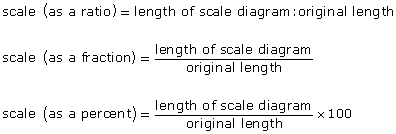Section 2
Completion requirements
Created by IMSreader
1. Section 2
1.37. Explore
Section 2: Perspective and Scale
Explore
In Discover you examined how changing the zoom affects the scale diagram or the scale map. You wrote the scale of the map as a ratio, but in Lesson 2 you saw that scale can be defined as a ratio, as a fraction, or as a percent.

There are many applications to using a zoom feature, such as reading maps or viewing objects through microscopes that use scale factors.
Try This 2
On this map of the Northwest Territories, a 1-cm distance on the map is equal to 200 km on the ground.
Natural Resources Canada
- Look at the map’s scale. This scale can also be written as a ratio and as a fraction. Why isn’t the scale written as 1:200 or
 ?
? 
- A scale written as a ratio must compare lengths in the same units. Convert 200 km into centimetres. Show your steps.


- Use the scale 1:20 000 000 to calculate how many miles would be represented by 1 in on the map. Round your answer to the nearest 10 mi.
- Set up a proportion using the map scale to find out how far (in inches) 1 in on the map represents in real life.


- Convert the number of inches on the ground to miles. Set up and use two separate proportions to do this conversion.


- Set up a proportion using the map scale to find out how far (in inches) 1 in on the map represents in real life.
![]() Save your responses to your course folder.
Save your responses to your course folder.
For another example involving proportional reasoning, turn to page 212 of MathWorks 11 and work through “Example 2.” Notice how a proportion is again used to help solve the problem.
If you have set up your proportions correctly, you will find that 1 in on the map is equal to about 320 mi on the ground.
There are 12 inches in 1 ft and 5280 ft in 1 mi.
If you have set up your proportion correctly, you will find that 1 in on the map is equal to 20 000 000 in on the ground.
If you set up your calculation correctly, you should see that 200 km = 20 000 000 cm.
Set up a proportion to convert 200 km to centimetres.
In order to write the scale as a ratio, the units of measurement must be the same. 1 cm and 200 km are NOT in the same units.
